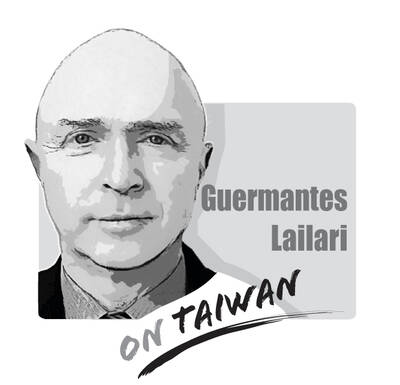Late last year, Chunjie (春節) was added to UNESCO’s Representative List of the Intangible Cultural Heritage of Humanity. While this recognition was a moment of pride for Chinese culture, it also reignited a long-standing debate: How should Chunjie be translated into English?
For decades, the holiday has been variously rendered as “Spring Festival,” “Chinese New Year” or “Lunar New Year,” each term carrying its own cultural and political implications. However, as the world becomes more interconnected, the question of which translation to use has become more than a linguistic curiosity — it is a matter of cultural identity and global influence.
Three main English translations are in use, with “Spring Festival” being the most favored, followed by “Chinese New Year” and “Lunar New Year.” The preference for “Spring Festival,” a verbatim rendition of Chunjie, reflects a desire to highlight the holiday’s unique cultural significance rather than framing it solely as a “new year” celebration. After all, Chunjie is deeply rooted in Chinese traditions, from family reunions and feasts to the iconic red envelopes, firecrackers and dragon dances. By adopting this straightforward literal translation, the holiday’s distinctiveness could be better conveyed.
In contrast, English-speaking countries tend to favor “Chinese New Year.” Major English dictionaries, including Oxford and Merriam-Webster, list “Chinese New Year” as the primary term, followed by “Lunar New Year” and “Spring Festival.” This preference is also reflected in large language corpora, such as the News on the Web corpus, which tracks over 20 billion words from English-language media.
The dominance of “Chinese New Year” in the English-speaking world underscores the holiday’s association with Chinese culture. However, it also raises questions about inclusivity, as the term implicitly centers China in a celebration that is also observed by other cultures, such as in Vietnam and South Korea.
In recent years, “Lunar New Year” has gained traction as more inclusive than “Chinese New Year.” This shift is partly driven by efforts from countries such as South Korea and Vietnam. Both nations have long-celebrated lunar new year traditions, but have increasingly pushed for the use of “Lunar New Year” to distance themselves from the Chinese-centric framing.
While “Chinese New Year” remains the most common term, its growth rate has almost plateaued out. Meanwhile, “Lunar New Year” has seen a significant uptick in usage, particularly in English-language media. This reflects a broader cultural and political movement toward de-Sinicization, as countries with historical ties to China seek to reclaim their narratives.
Amid these debates, some scholars and media outlets have advocated for using the Pinyin-transliterated “Chunjie” as the primary English term. Historical precedents offer valuable insights. This approach aligns with the way other traditional festivals are translated, such as Japan’s Tanabata (Lovers’ Day) and Obon (Festival of the Dead), South Korea’s Seollal (Korean New Year), or Vietnam’s Tet (Vietnamese New Year). Given these examples, the transliteration of Chunjie is not only natural but also consistent with global practices.
As the Year of the Snake approaches, let us embrace this opportunity to assert our cultural voice on the global stage. By adopting “Chunjie” as the primary term, supplemented by “Spring Festival” and “Chinese New Year,” we can ensure that our traditions are represented authentically and respectfully. After all, language is not just a tool for communication — it is a vessel for culture, history and identity.
Hugo Tseng holds a doctorate in linguistics, and is a lexicographer and former chair of the Soochow University English Department.

“History does not repeat itself, but it rhymes” (attributed to Mark Twain). The USSR was the international bully during the Cold War as it sought to make the world safe for Soviet-style Communism. China is now the global bully as it applies economic power and invests in Mao’s (毛澤東) magic weapons (the People’s Liberation Army [PLA], the United Front Work Department, and the Chinese Communist Party [CCP]) to achieve world domination. Freedom-loving countries must respond to the People’s Republic of China (PRC), especially in the Indo-Pacific (IP), as resolutely as they did against the USSR. In 1954, the US and its allies
The fallout from the mass recalls and the referendum on restarting the Ma-anshan Nuclear Power Plant continues to monopolize the news. The general consensus is that the Democratic Progressive Party (DPP) has been bloodied and found wanting, and is in need of reflection and a course correction if it is to avoid electoral defeat. The Chinese Nationalist Party (KMT) has not emerged unscathed, either, but has the opportunity of making a relatively clean break. That depends on who the party on Oct. 18 picks to replace outgoing KMT Chairman Eric Chu (朱立倫). What is certain is that, with the dust settling
Mainland Affairs Council Deputy Minister Shen You-chung (沈有忠) on Thursday last week urged democratic nations to boycott China’s military parade on Wednesday next week. The parade, a grand display of Beijing’s military hardware, is meant to commemorate the 80th anniversary of Japan’s surrender in World War II. While China has invited world leaders to attend, many have declined. A Kyodo News report on Sunday said that Japan has asked European and Asian leaders who have yet to respond to the invitation to refrain from attending. Tokyo is seeking to prevent Beijing from spreading its distorted interpretation of wartime history, the report
Indian Prime Minister Narendra Modi arrived in China yesterday, where he is to attend a summit of the Shanghai Cooperation Organization (SCO) with Chinese President Xi Jinping (習近平) and Russian President Vladimir Putin today. As this coincides with the 50 percent US tariff levied on Indian products, some Western news media have suggested that Modi is moving away from the US, and into the arms of China and Russia. Taiwan-Asia Exchange Foundation fellow Sana Hashmi in a Taipei Times article published yesterday titled “Myths around Modi’s China visit” said that those analyses have misrepresented India’s strategic calculations, and attempted to view